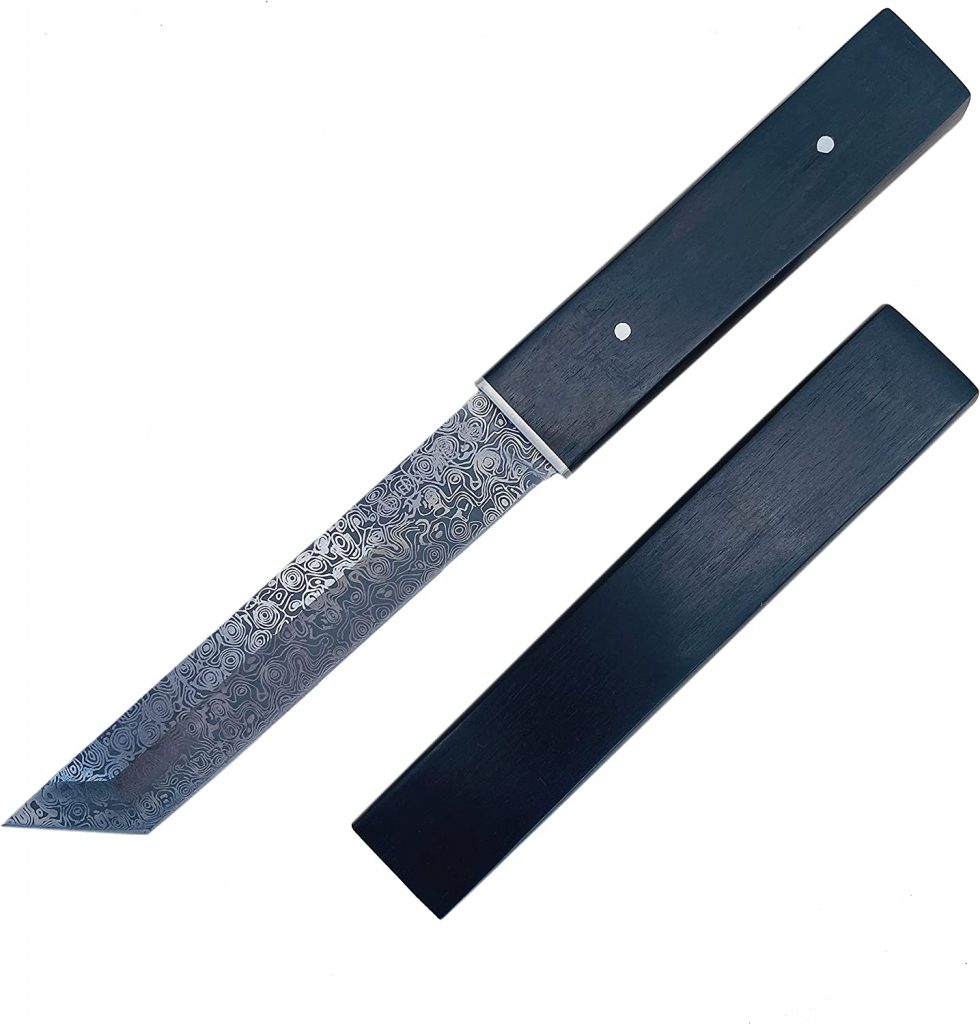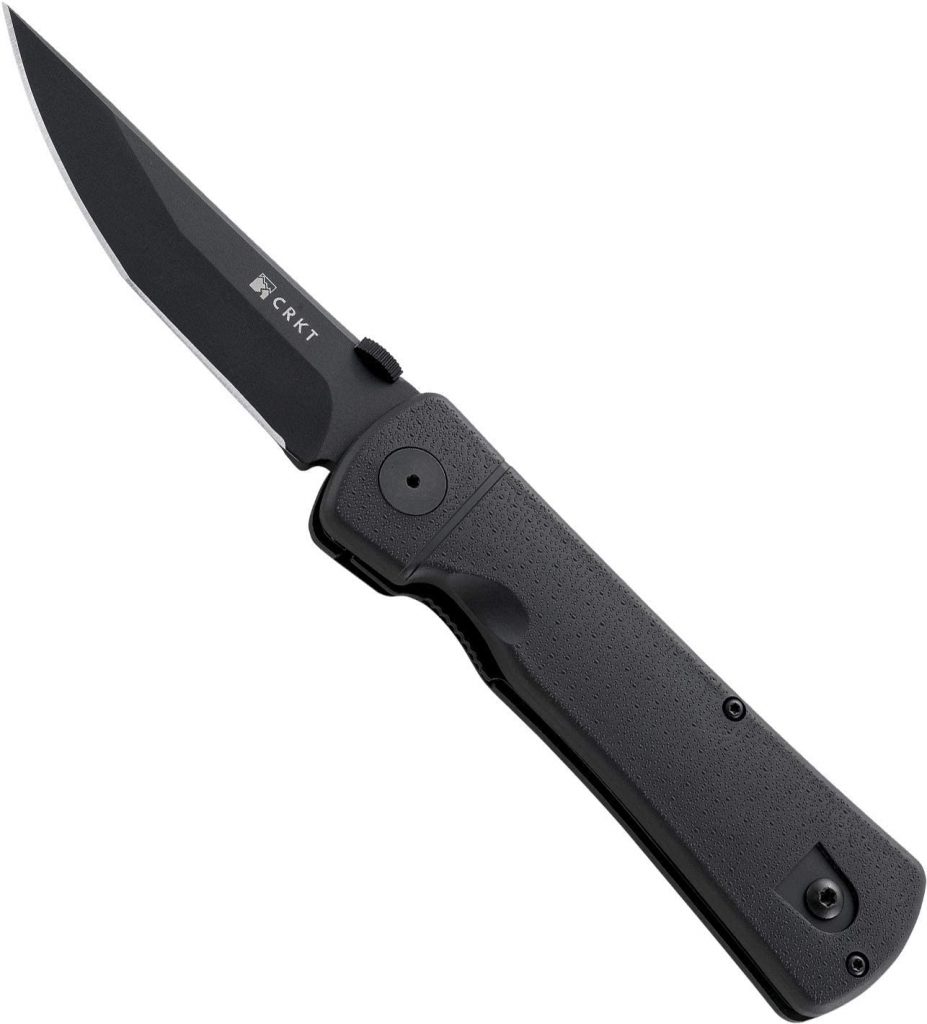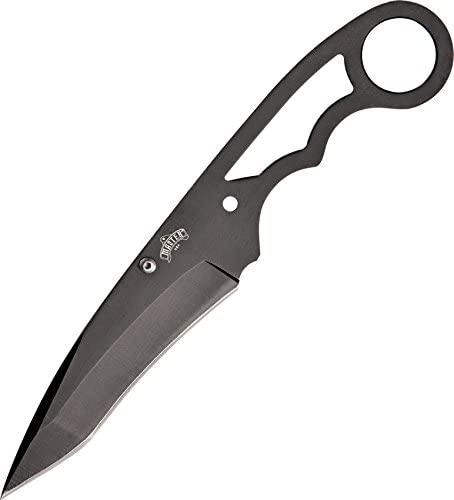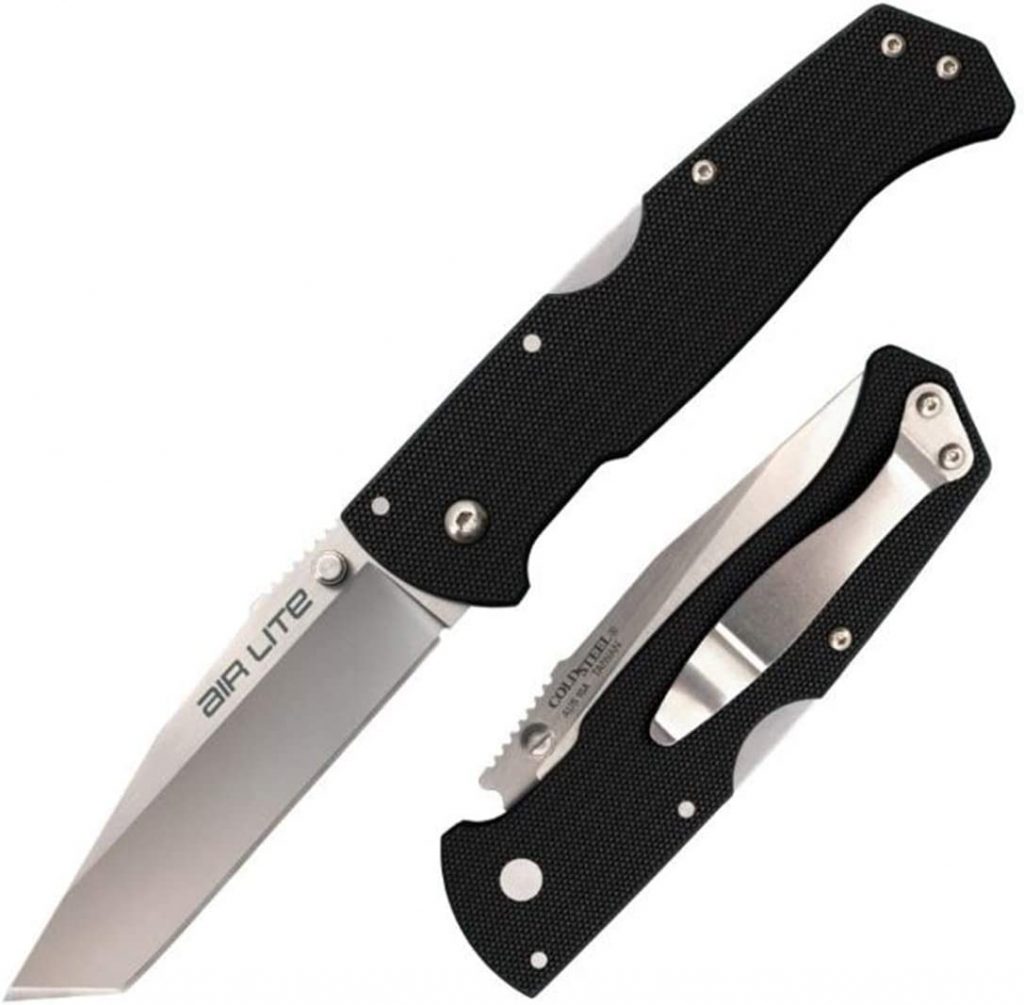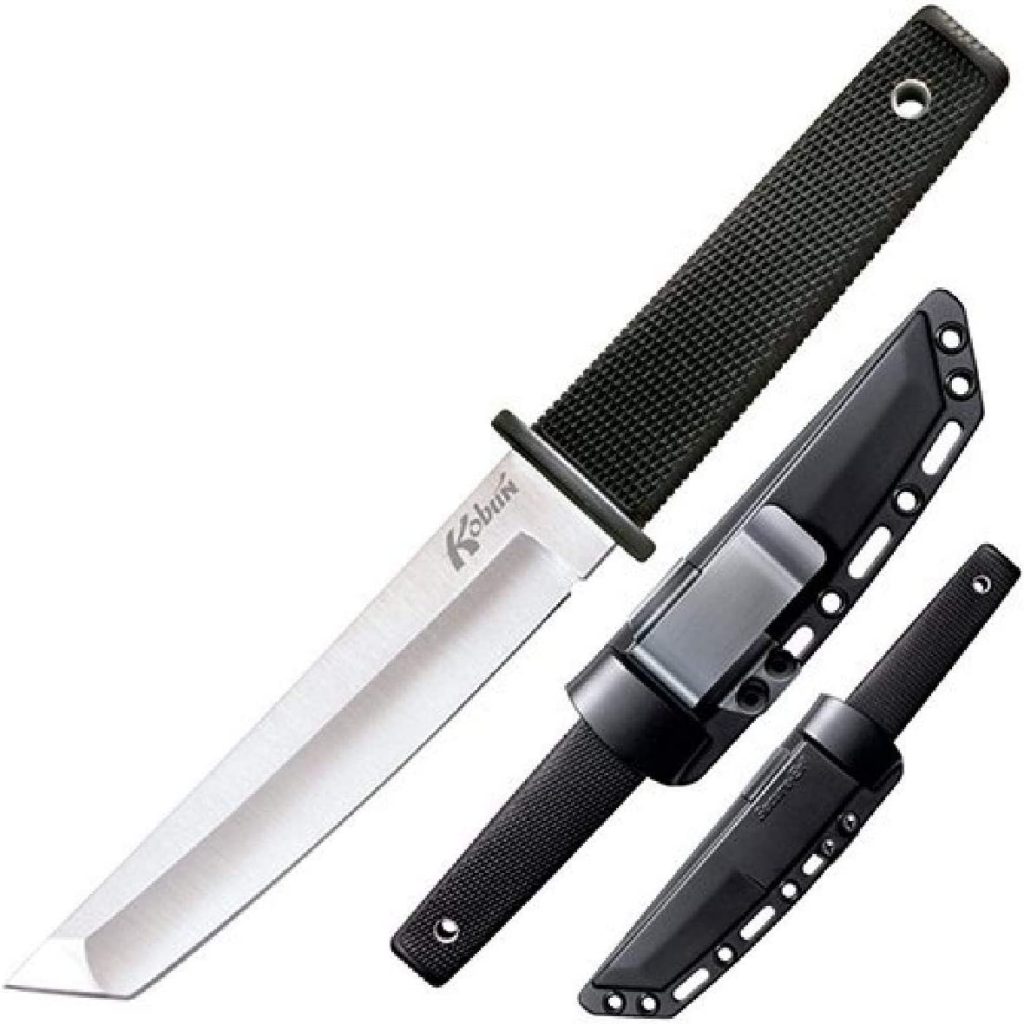Do you need a new knife for your kitchen? If so, you may wonder if a Japanese Tanto knife is the best option. These knives are becoming increasingly popular due to their combination of sharpness and durability.
When looking for the best Japanese Tanto knife, you must consider what you will use it for. A Tanto knife is a versatile tool for various tasks, from precision cutting to self-defense. With so many different knives on the market, it can be challenging to determine which one is right for you. This article will discuss the features of the best Japanese Tanto knives and help you decide which one is right for your needs.
What Is a Japanese Tanto Knife?
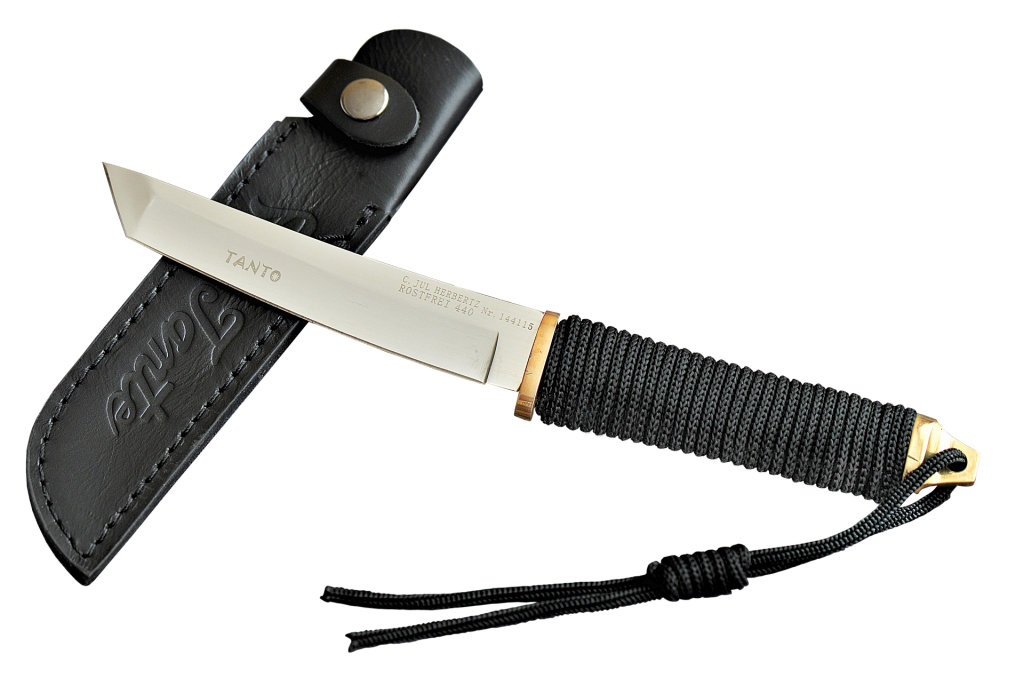
The Japanese Tanto knife is a type of knife popular for self-defense. Tanto means “short blade” in Japanese, and the Tanto knife is typically short and stubby. Most Tanto knives have a blade length of fewer than six inches, and the back of the blade is often angled sharply to provide a more effective cutting edge.
In addition to being used for self-defense, the Tanto knife is also commonly used for various utility tasks, such as opening boxes or packages. The Tanto knife is an essential part of many traditional Japanese martial arts and continues to be popular among knife enthusiasts worldwide.
History of the Japanese Tanto Knife
The Tanto knife originated in Japan during the Heian period (794-1185), where it was utilized as a dagger by the samurai class. The Tanto knife is used to penetrate armor and quickly became an essential part of Japanese warfare.
A Tanto knife became increasingly popular during the Kamakura period (1185-1333). During this time, the Tanto was used by samurai warriors in close-quarters combat. By the Muromachi period (1333-1573), the Tanto had become even more widespread and began to be used by civilians and soldiers.
The Tanto knife was adapted as a utility tool during the Edo period (1603-1868). The blade was longer, and the back of the blade was often angled to provide a more effective cutting edge.
Today, the Tanto is still commonly used in Japanese martial arts and is also popular with collectors of a Japanese sword.
The Best Japanese Tanto Knife: Uses and Benefits
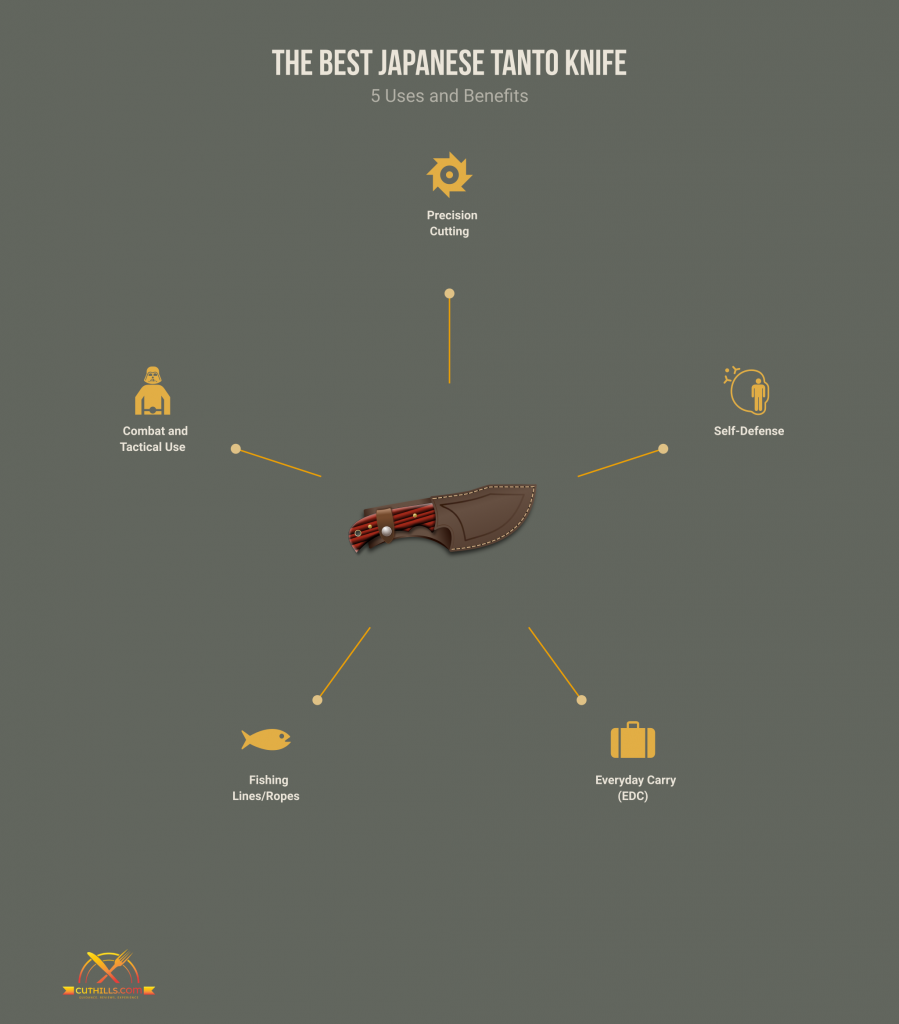
The Japanese Tanto knife is a small knife that is perfect for everyday carry. It is lightweight and easy to carry, yet it is still strong enough to handle most tasks. The blade comes from high-carbon steel, which makes it durable and resistant to corrosion. The Japanese knife also features a full Tang construction, meaning that the blade extends through the handle. It helps to balance the knife and makes it more comfortable to use.
A Tanto is a versatile knife that you can use for various tasks. Among its most popular uses are:
🔪Precision Cutting
Precision cutting is an important use for the Tanto knife. This type of knife is especially well-suited for precision tasks, thanks to its sharp blade and thin profile. A Tanto knife is multifunctional and used for various purposes, such as trimming vegetables, slicing meat, or even carving meat, among other things. The thin blade allows the user to make precise cuts with little effort, and the sharp edge ensures that the cuts are clean and smooth.
If you often find yourself working with small and delicate ingredients in the kitchen, this tool is perfect for you – sushi chefs and caterers love it! Besides, a good chef needs to be able to make precise cuts to create beautiful and delicious dishes.
🔪Self-Defense
A Japanese Tanto knife is a powerful self-defense tool. The sharp, stubby blade can inflict significant damage on an attacker and frighten or scare a potential attacker. In addition, the Tanto knife is easy to carry and conceal, making it a good option for those concerned about personal safety.
The Tanto knife is also popular among law enforcement and military personnel. Many police officers and soldiers carry a Tanto knife as a backup weapon in case they are disarmed or need to use deadly force.
🔪Everyday Carry (EDC)
A good EDC knife must be small, lightweight, and easy to carry. The Tanto knife fits all of these criteria, making it a popular choice for those who need a reliable EDC knife. The knife is compact enough to fit in a pocket or belt and use for various purposes, such as opening boxes or packages.
Tanto knives provide an excellent balance of form and function and are a perfect choice for those who need a versatile, reliable knife for everyday carry.
🔪Fishing Lines/Ropes
As anyone who spends any time outdoors fishing knows, having a sharp and reliable knife can be the difference between landing that big catch and going home empty-handed. But, while a fillet knife or even simple kitchen knives might do the trick for smaller fish, there’s simply no substitute for a good, stout Tanto knife for larger specimens. With its razor-sharp blade and strong point, a Tanto is a perfect tool for quickly slicing through a fish’s tough skin and flesh.
But that’s not all a Tanto knife is good for. It can also be beneficial for cutting through ropes and fishing lines, which can often be just as tough as the fish. In some cases, having a good Tanto knife on hand can be essential when fishing, especially if you’re targeting larger gamefish like salmon or trout.
🔪Combat and Tactical Use
A Tanto knife is an excellent tool for combat and tactical purposes. Its insanely strong tip and razor-sharp blade make it the perfect tool for easily penetrating an enemy combatant, even with clothing or low-level soft body armor. Furthermore, its low friction blade enables swift and destructive damage.
While most knives carried by soldiers aren’t for violence, the Tanto knife is still an excellent tool for survival, setting up camp, weapon or gear maintenance, triage, etc. In combat and tactical situations, the Tanto knife is a critical piece of equipment that can mean the difference between life and death.
Types of Japanese Tanto Knives
When shopping for a Japanese Tanto knife, you will come across various types and styles. Each design has unique advantages and disadvantages, so choosing the right knife for your needs is essential.
Some of the most popular types of Tanto knives include:
🔶Chisel-Point Tanto Knife
A chisel-point Tanto knife is a knife with a curved blade and a sharp point. The steel blade is usually between four and six inches long, and the handle comes from wood or plastic. Chisel-point Tanto knives are popular among collectors and outdoor enthusiasts because of their distinctive appearance and utility.
However, there are certain downsides to using this sort of knife. The sharp point can make the blade more difficult to control. Additionally, the blade is more susceptible to breakage than a straight-edged blade. As a result, chisel-point Tanto knives should be used with care and only by experienced users.
🔶Spear-Point Tanto Knife
A spear-point Japanese Tanto knife is a type of knife with a distinctive blade shape. Unlike a traditional Tanto knife, which has a straight edge and a pointed tip, a spear-point Tanto has a curved edge and a tapered end. The result is a sharp and strong blade, making it ideal for piercing and stabbing.
However, the lack of a straight edge means spear-point Tantos are less versatile than traditional Tantos. They are also more challenging to sharpen, making them less ideal for everyday use.
🔶Recurve Blade Tanto Knife
A recurve blade Tanto knife is a type of knife with a curved blade and a pointed tip. The blade provides more cutting force than a straight-edged knife of the same length. The increased cutting power makes the recurve blade Tanto knife ideal for slicing and chopping tasks.
However, the unusual shape of the blade can make it more difficult to sharpen than a traditional Tanto knife. In addition, the increased cutting power may also make the knife more difficult to control, which could lead to accidents. As with any knife, it is essential to use caution when handling a recurve blade Tanto knife.
🔶Folding Tanto Knife
Folding pocket Tanto knives are a type of knife that is small and lightweight, making them easy to carry around. The high carbon steel blade is long-lasting and simple to sharpen. It has a wood or plastic handle and a protective coating on the blade.
The knife is a favorite outdoors tool for campers and hikers because of its easy portability and many functions, such as cutting rope or slicing through plants. However, some people find the blade too small for larger tasks, and the handle can be uncomfortable to grip for extended periods. Additionally, the edge can be difficult to sharpen when it begins to dull.
🔶Fixed-Blade Tanto Knife
A fixed-blade Tanto knife is a type of knife that features a straight edge and a pointed tip. Fixed-blade Tanto knives are more durable than folding knives, as they do not have moving parts that can break or become worn down over time. Additionally, the straight edge of a fixed-blade Tanto knife provides greater precision than a serrated blade.
However, fixed-blade knives can be more challenging to carry and conceal than folding knives, requiring more care and maintenance. Additionally, the sharp point of a fixed-blade Tanto knife can be dangerous if not used properly.
Things to Consider When Buying a Tanto Knife
Carrying a knife is always a good idea. You never know when you’ll need to cut something open or defend yourself. When it comes to knives, there are numerous types to pick from. But if you’re looking for a versatile, all-purpose knife, you can’t go wrong with a Tanto knife. Tanto knives are the perfect tool for close-quarters combat and everyday utility use. But with so many different Tanto knives on the market, how do you know which one to buy?
Here are a few things to consider:
👉Size of the Knife
When it comes to knives, size matters; Tanto knives come in various sizes, so you’ll want to choose one that’s comfortable for you to carry and use. If you’re planning on using your Tanto knife for self-defense, you’ll want to select a smaller size that you can easily conceal. If you’re looking for an all-purpose utility knife, you’ll want to choose a larger size that can handle more demanding tasks.
👉Blade Material
The knife’s blade is the most crucial part, so you’ll want to ensure it’s come from high-quality material. The most common materials used in Tanto knife blades are stainless steel, carbon steel, and titanium. Stainless steel is a good choice for people who want a durable, corrosion-resistant blade. Carbon steel is harder and more durable than stainless steel, but it can rust if not properly cared for. Titanium is lightweight and robust, but it may be costly.
👉Blade Style
The blade style you choose will depend on what you plan to use your knife for. A plain edge Tanto blade is suitable for general utility use, while a serrated edge blade shape is better for cutting through rigid materials like rope or wood.
👉Handle Material
The handle is the section of the knife you’ll be holding, so it’s crucial to choose a comfortable material. Some common handle materials used in Tanto knives are wood, plastic, and metal. Wood and plastic handles are usually less expensive than metal handles, but they can be more tricky to grip when your hands are wet. Metal handles can be more expensive, but they’re often more durable and have a better grip.
👉Sheath
Most Tanto knives come with a sheath, which protects the blade when it’s not in use. When choosing a sheath, you’ll want to make sure it’s coming from a durable material that can withstand the elements. Nylon and leather are among the most popular materials used in knife sheaths. Leather sheaths are often more expensive but more durable and look nicer. Nylon sheaths are usually cheaper, but they’re not as durable.
👉Price
Tanto knives can range in price from $20 to $200 or more. When choosing a knife, you’ll want to find an affordable one. However, don’t let pricing be the sole consideration. Always keep in mind that you receive the quality that you pay for. So, if you want a high-quality knife that will endure for years, you may have to invest a little extra money upfront. However, it will be worth it in the long run.
The Best Way to Care For Your Tanto Knife
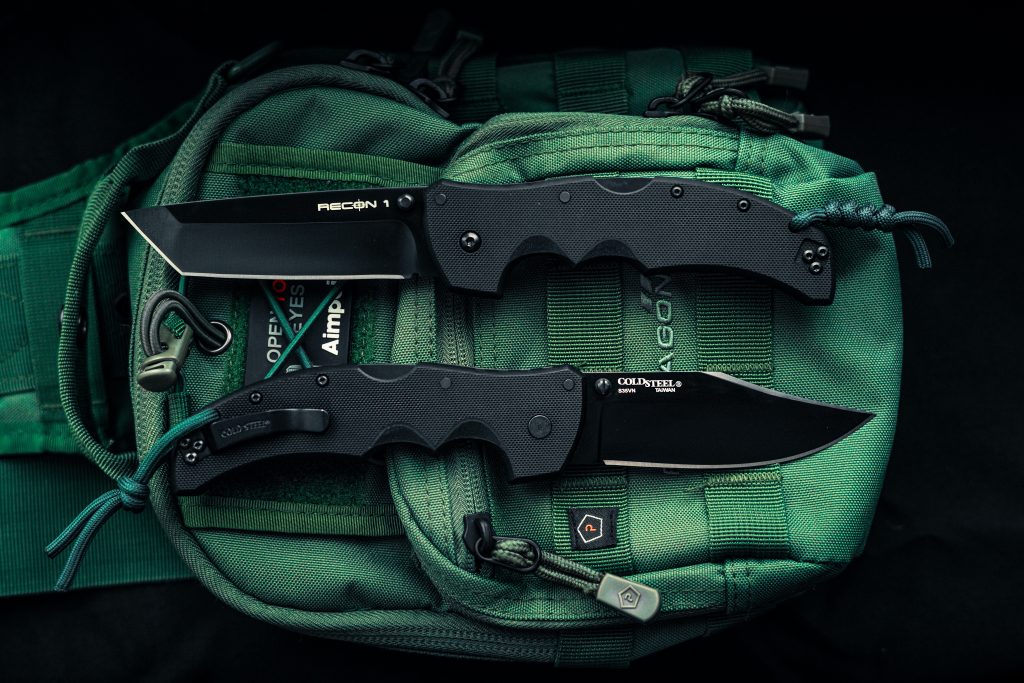
Taking care of your Japanese Tanto knife is crucial if you want it to last for years. Here are a few tips to help you keep your knife in good condition:
✔️Sharpening
You’ll need to sharpen your knife regularly to keep the blade in good condition. There are various ways to sharpen your knife, including using a honing rod, sharpening stone, or an electric knife sharpener. It is good to experiment with different methods to find the one that works best for you.
✔️Clean After Use
Clean your knife after each usage to avoid the build-up of dirt and grime. You can wash your knife with soap and water or use a vinegar solution. If you’re cleaning a stainless steel knife, dry it immediately to prevent rusting.
✔️Store in a Safe Place
When you’re not using your knife, be sure to store it in a safe place. A kitchen drawer or cabinet is a good option. You should also consider investing in a knife block or sheath to protect the blade when it’s not in use. Avoid storing your knife in a humid area, as this might cause the blade to rust.
✔️Wash With Hands
Though most knives are dishwasher safe, washing your knife by hand is always best. Washing your knife in the dishwasher can cause it to be dull over time. Its also necessary to avoid using harsh chemicals, like bleach, when cleaning your knife.
✔️Use a Cutting Board
When cutting with your Tanto knife, use a cutting board. It will help protect your countertops and keep the blade from dulling. You should also avoid cutting through bone or frozen food, as this can damage the blade.
Frequently Asked Questions
Q. Benchmade vs. Kershaw, which knives are suitable for you?
If you’re in the market for a new knife, you may wonder whether to choose a Benchmade or a Kershaw. Both brands are well-known for their quality knives, but some significant differences are essential. Benchmade knives are pricier but also made with premium materials and construction. On the other hand, Kershaw knives are more affordable while still offering good quality.
So, which brand is right for you? It depends on your needs and budget. If you’re looking for the best of the best, go with a Benchmade. But if you’re just looking for a good, solid knife that won’t break the bank, Kershaw is a great choice.
Q. What knife does the most damage?
A knife is only as dangerous as the person wielding it. In the hands of a skilled chef, a kitchen knife can help turn out excellent food that tastes great and looks phenomenal. However, even a tiny kitchen knife can cause severe damage when placed in the wrong person’s hands.
Therefore, the type of knife that does the most damage depends on your use. A steak knife, for example, is designed to cut through tough meat. Its serrated edge can easily slice through flesh, making it a potentially deadly weapon in the right hands. Likewise, a kitchen knife with a sharp blade can also cause serious injuries if used to stab or slash. Ultimately, any knife has the potential to do severe damage, and it is up to the user to handle it with care.
Q. Is a drop point knife effective in self-defense?
When it comes to self-defense, a drop-point knife can be a good option. Unlike other knives, a drop point has a thicker and stronger tip, making it better for penetrating thick layers of fabric or flesh. Additionally, the broad blade provides more surface area for cutting, making it easier to slash an attacker.
Q. What is a boning knife, and is it worth the money?
A boning knife is a kitchen knife for removing bones from meat. The thin, sharp blade and pointed tip make it easy to maneuver around small bones, and the blade’s narrow width helps prevent waste. Boning knives are typically made from high-carbon steel or ceramic, making them durable and resistant to corrosion.
While boning knives are not essential for every kitchen, they can be a worthwhile investment for those who regularly cook bone-in meats. The precise blade also makes boning knives ideal for other tasks such as filleting fish or trimming the fat. A boning knife can be a valuable addition to the kitchen for home cooks who enjoy preparing their meals.
Q. What angle do you sharpen a knife?
Contrary to popular belief, there is no one “correct” angle to sharpen a knife at. The angle you use will depend on the type of knife you are honing and your personal preferences. For example, most chefs prefer to sharpen their knives at a 20-degree angle, which provides a sharp edge that is still durable enough to withstand daily use.
However, if you are sharpening a more delicate knife, such as a paring knife, you may want to use a shallower angle to avoid damaging the blade. Ultimately, the best way to find the right angle for your knife is to experiment and see what works best for you.
Q. What is the distinction between Wakizashi and Tanto?
While both Wakizashi and Tanto are Japanese swords, there are some key differences between the two. Wakizashi is typically between 12 and 24 inches long, while Tanto is usually only 6 to 12 inches in length.
Wakizashi were traditionally worn by samurai along with a katana, while Tanto was usually carried by lower-ranking warriors or used as a backup weapon. The blades of wakizashi are also generally thinner than those of Tanto, making them better suited for cutting through armor. Because of their smaller size and more straightforward construction, Tanto was also much cheaper to produce than Wakizashi.
Today, both Wakizashi and Tanto are famous collectors’ items, and many modern swordmakers continue to produce them in traditional styles.
Bottom Line
Whether you are looking for a new kitchen knife or a sword for your collection, a Japanese Tanto knife can be a great option. These versatile, durable, and beautiful knives come in various styles to suit your needs. Given the numerous different sorts of knives on the market, it might be tough to decide which one is best for you. However, by considering your needs and researching, you can find the perfect Tanto knife for your purpose.

